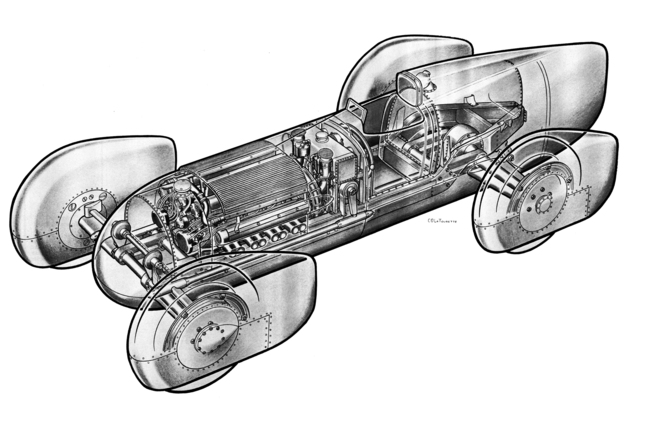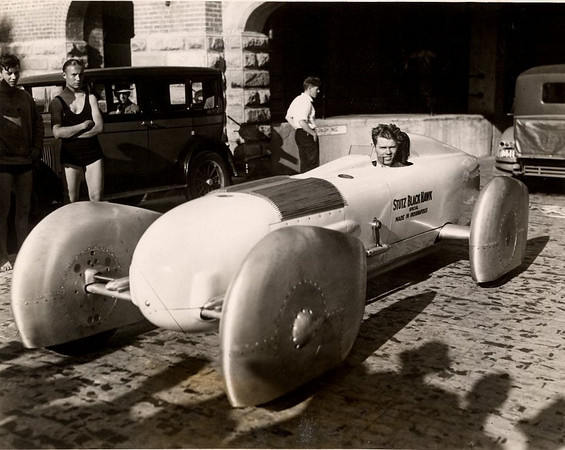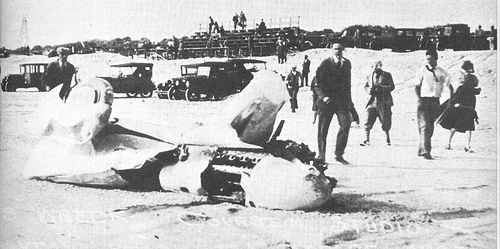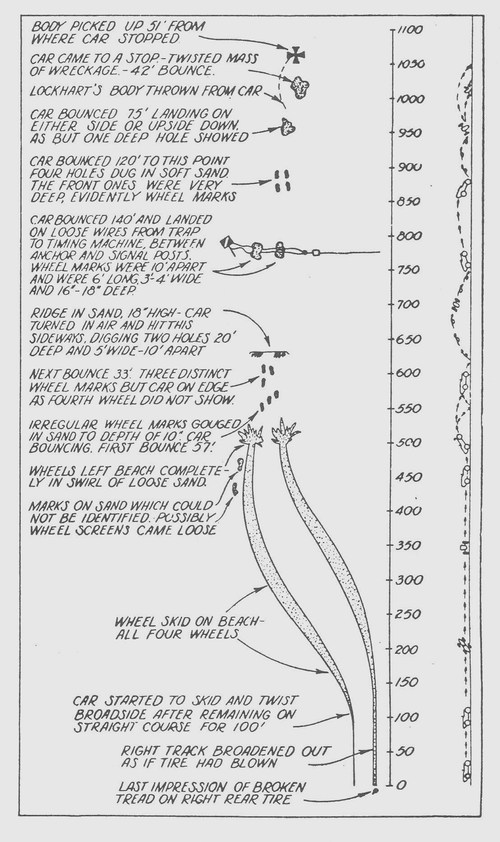83 Years ago Today: Frank Lockhart loses his life in the Stutz Black Hawk Special
 Sunday, April 24, 2011 at 2:55PM
Sunday, April 24, 2011 at 2:55PM Frank Lockhart is a name that has faded into relative obscurity, but in the mid 1920s he was one of the finest racing drivers in North America. After winning the Indianapolis 500 on his rookie attempt, in 1926, Lockhart and his Miller racing car went from track to track winning races and breaking records on the great wooden board-paved speedways that were common to the era.
 With dashing looks and speed to match, Lockhart was a youthful success: He had just turned 23 when he won Indy. But even more impressive than his bravery and skill behind the wheel was Lockhart's innate engineering ability. He began modifying his Miller racing car to make speed runs in California on dry lakes, achieving new records in 1927. This success attracted the attention of the Stutz automotive company in Indiana, who financially backed Lockhart as he designed and constructed a purpose-built car for an all-out assault on the world land speed record at Daytona Beach in 1928.
With dashing looks and speed to match, Lockhart was a youthful success: He had just turned 23 when he won Indy. But even more impressive than his bravery and skill behind the wheel was Lockhart's innate engineering ability. He began modifying his Miller racing car to make speed runs in California on dry lakes, achieving new records in 1927. This success attracted the attention of the Stutz automotive company in Indiana, who financially backed Lockhart as he designed and constructed a purpose-built car for an all-out assault on the world land speed record at Daytona Beach in 1928.
 Aside from its breathtaking beauty and gorgeous streamlined shape, the Stutz Black Hawk bristled with innovative design features. In an era when Malcom Campbell's Bluebird record cars weighed thousands of pounds and were powered by enormous aero engines of massive displacement, Lockhart's design was a tiny white and silver dart in comparison. Not much larger than a Miller Indy car, the Black Hawk was dwarfed by most contemporary record cars, and featured a compact 16 cylinder engine, which was essentially 2 straight eights mated together. The body and undercarriage were completely faired in, with low frontal area. Suspension and wheels were enclosed in sleek aluminum spats for even greater drag reduction. Because the car was intended only for record runs, the spats remained fixed and did not turn with the wheels, which had only a few degrees of lock. Instead of radiators that would increase drag, cooling was achieved using an internal ice container!
Aside from its breathtaking beauty and gorgeous streamlined shape, the Stutz Black Hawk bristled with innovative design features. In an era when Malcom Campbell's Bluebird record cars weighed thousands of pounds and were powered by enormous aero engines of massive displacement, Lockhart's design was a tiny white and silver dart in comparison. Not much larger than a Miller Indy car, the Black Hawk was dwarfed by most contemporary record cars, and featured a compact 16 cylinder engine, which was essentially 2 straight eights mated together. The body and undercarriage were completely faired in, with low frontal area. Suspension and wheels were enclosed in sleek aluminum spats for even greater drag reduction. Because the car was intended only for record runs, the spats remained fixed and did not turn with the wheels, which had only a few degrees of lock. Instead of radiators that would increase drag, cooling was achieved using an internal ice container!
(Click the image above to enlarge)


Lockhart's first runs in the car in February of 1928 were disappointing, but it was soon discovered that overzealous streamlining was robbing the car's engine of air. Modifications were made and the car gained in speed. Unfortunately during a subsequent run, Lockhart hit a nasty bump in the hard-packed beach sand, causing his car to be tossed into the sea with him trapped inside. Thanks to intrepid spectators, the hapless driver's head was kept above the surf until he could be extracted, saving him from drowning. He was otherwise not seriously injured.
 The car, however, was seriously damaged and required a rebuild at the Stutz factory. This mishap represents a turning point Lockhart's fortunes. Because of the unexpected cost of rebuilding the car and staging a second record attempt, Lockhart's funds were in serious trouble. He had been using race-proven Firestone tires up to this point, but in order to scrounge up more sponsorship money, he switched to Mason Tires, which was a less reputable brand.
The car, however, was seriously damaged and required a rebuild at the Stutz factory. This mishap represents a turning point Lockhart's fortunes. Because of the unexpected cost of rebuilding the car and staging a second record attempt, Lockhart's funds were in serious trouble. He had been using race-proven Firestone tires up to this point, but in order to scrounge up more sponsorship money, he switched to Mason Tires, which was a less reputable brand.
By April, Lockhart was back in Daytona with a freshly rebuilt car running on Mason Tires. At this point in the season, the beach was not in optimal condition, but with his money running out Lockhart knew it was his last chance to break the record. His third run, against a headwind, saw him top 200mph. The record to beat was 207mph. Feeling that victory was within his grasp, Lockhart quickly had the car turned around to make his 4th run, which would hopefully break the record. In his haste to complete the final run before high tide came in upon the beach, Lockhart did only a cursory inspection of his tires, and failed to note that a seashell had damaged one of his tires on the previous run.
So it came to pass that on April 25, 1928, Frank Lockhart made his fateful final run in the Stutz Black Hawk. At approximately 225mph, his damaged tire exploded, causing him to completely lose control of the car. The vehicle overturned multiple times, throwing Lockhart from the car and killing him instantly. Legend has it that Lockhart's lifeless body landed not far from where his wife was watching in horror. He was only 26 years old.

Below is an "accident report" that diagrams the path of the car in its final moments.
 I have been fascinated by this tragic story since boyhood, but only this week did I learn that there is actual newsreel footage of the fatal accident. You can see Lockhart's body being ejected as the car makes its final gruesome somersault. A warning: Though the footage is grainy Black and White, sensitive viewers may still find it disturbing.
I have been fascinated by this tragic story since boyhood, but only this week did I learn that there is actual newsreel footage of the fatal accident. You can see Lockhart's body being ejected as the car makes its final gruesome somersault. A warning: Though the footage is grainy Black and White, sensitive viewers may still find it disturbing.
References:
http://www.racingcampbells.com/content/campbell.archives/stutz.black.hawk.asp
http://oilpressure.wordpress.com/2009/07/15/frank-lockhart-boy-genius-part-ii/
 1928,
1928,  Automotive History,
Automotive History,  Blackhawk,
Blackhawk,  Daytona,
Daytona,  Frank Lockhart,
Frank Lockhart,  LSR,
LSR,  Record Car,
Record Car,  Stutz,
Stutz,  Stutz Black Hawk,
Stutz Black Hawk,  streamlined in
streamlined in  History,
History,  Obituaries
Obituaries 

Reader Comments